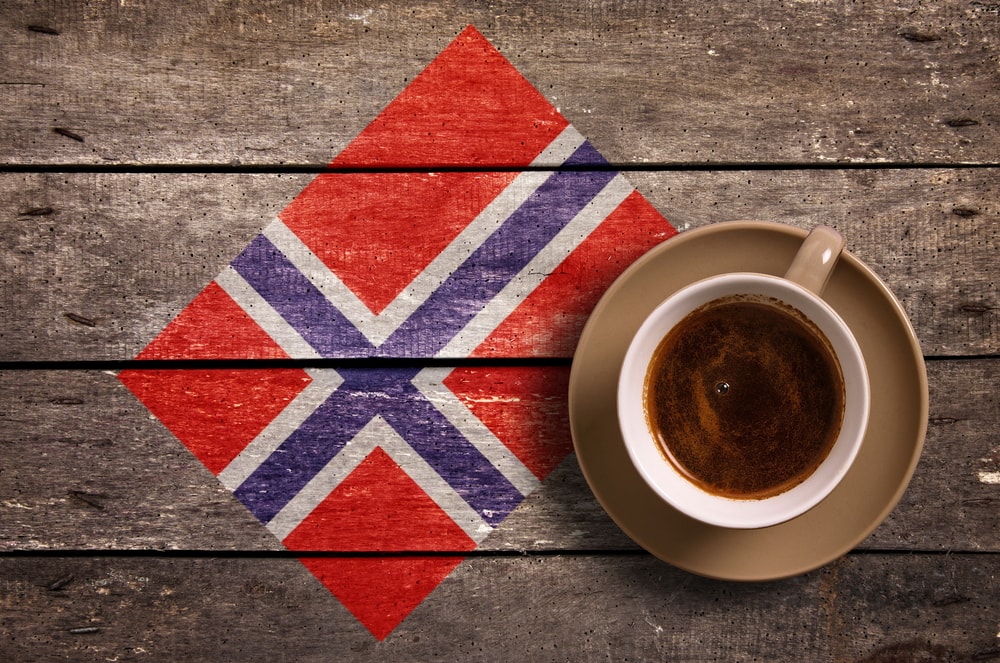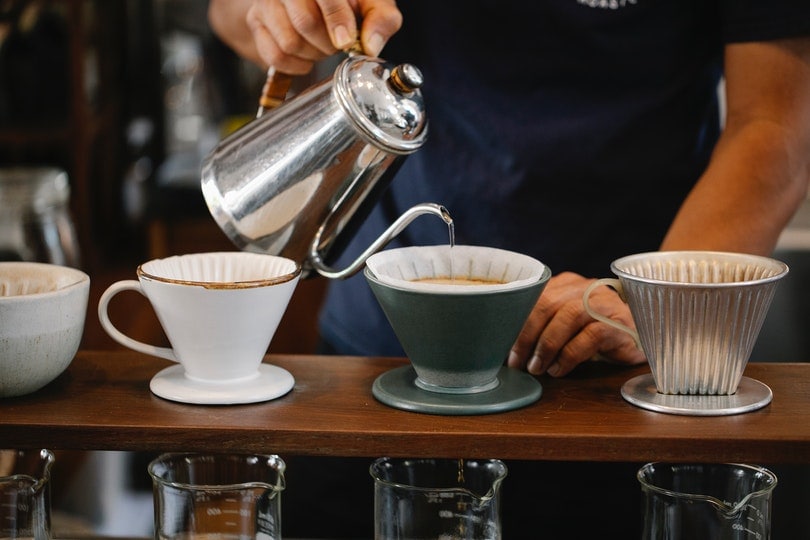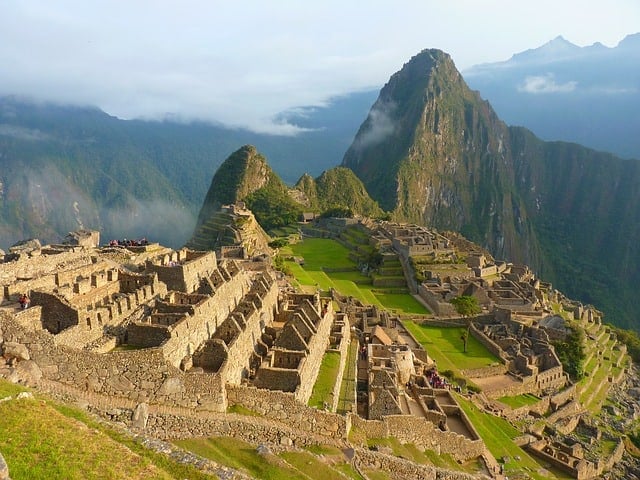
Norway has recently become known as a country dedicated to coffee culture. In fact, Norway has the second-highest per capita coffee consumption, with roughly 5 million people in the nation drinking four to five coffees a day!1
Norway’s passion for roasted beans was a transformation that happened over many years and has now reshaped itself into modern and hip coffee shops on every corner. But just how did they get to this point? Read on to learn more about Norway’s coffee history and culture.

Norway’s Coffee History
Norwegian coffee culture has evolved in recent years, but it was a guide printed by Peter Christen Asbjørnsen in 1861 that truly transformed the coffee experience for Norwegians. This guide is how kokekaffe was born, a simple yet flavorful boiled coffee.
An important part of Norway’s history includes a prohibition of alcohol which existed between the years 1917 and 1927. This ten-year gap in alcohol access led to a search for a new social drink.
It’s believed that coffee filled the space in that gap, and it continues to this day because of its accessibility. Even after alcohol was available to Norwegians again, the high price deterred consumers and the coffee availability boomed, mostly in part due to trade opening up with other nations, such as Denmark.
It was Asbjørnsen’s guide that truly allowed Norwegians to learn to love and master this drink at home. It was only up until 20 years ago that coffee started truly being enjoyed outside of the home in modern coffee chops.

Popular Ways to Drink Coffee in Norway
Kokekaffe
Norwegian kokekaffe is known for being a light roast. This is preferred by Norwegians because it’s believed to bring out more of the sweetness of the beans. In addition, it’s said that dark roasts can hide poor-quality beans, which cannot be done with light kokekaffe roasts. So, the flavor that hits your pallet is unaltered, pure, and smooth.
Brewing Tips for Kokekaffe
Kokekaffe literally means boiled coffee, and it’s the traditional way for Norwegians to brew their coffee. You bring water to a boil, add ground coffee, and allow it to steep for around four minutes.
https://www.instagram.com/p/CmL5bxGKmfa/
Norwegian Egg Coffee
Norwegian egg coffee is a preparation technique that is popular in Norway as well as in Sweden. It was first created by coffee artisans to combat the bitterness of poor quality coffee but has since become a way to give coffee an even smoother and less acidic taste.
Brewing Tips for Norwegian Egg Coffee
Norwegian egg coffee is made by cracking an egg and adding it—and its shell—into the grounds of coffee. You then brew the coffee grounds using the kokekaffe method but finish it off by shocking your brew with cold water. This allows the egg mixture and grounds to sink to the bottom, so you don’t need to strain the concoction (though some people still do).
Don’t worry – this coffee doesn’t have an egg taste!
https://www.instagram.com/p/B1SRDf6HcxF/
Norwegian Cafe Culture
Norway is also known for its long and cold winters, and a warm drink in a coffee shop became a preferred alternative for social meetings and afternoon gatherings. Coffee shops truly experienced rapid growth after Norwegian Robert Thoreson became the first World Barista Champion in the year 2000.
Where to Get the Best Coffee in Norway
- Oslo. Many World Brewers Champions have opened shops in the city of Oslo. 2005 World Cup Tasting Champion Tim Wendelboe opened up a micro-roastery, training center, and coffee shop that shares his name. 2015 World Brewers Cup Champion Odd-Steinar Tøllefsen also has a cafe.
- This beautiful harbor city has a roastery called Bergen Kaffebrenneri which not only sells their own beans but also serves them. Check out Kaffeemisjonen for a cup served by the winner of the 2015 Norwegian Cup Tasting Championships, Jan Richeter Lorentzen.
- Tromsø. Kaffebønna Stortorget is said to serve one of the best cups in the nation.
- Trondheim. Check out Café le Frère for a delicious brew in a traditional Norwegian atmosphere.

Norwegians: Mixing a Passion for Coffee with Outdoor Life
Many Norwegians are so passionate about coffee having a place in their daily lives that making coffee on a hiking trip is a popular pastime. They prepare their kokekaffe on an open fire, stopping to enjoy the beauty around them while conversing with friends and family gathered. Even this rustic black coffee manages to soothe the soul. The key to a good brew is ensuring your materials are thoroughly cleaned; that’s all it takes to master a kokekaffe, even out in the wilderness.
It’s not uncommon for Norwegians to throw the remaining brew into a thermos and continue their trek. In fact, most souvenir shops in Norway are packed full of thermos cups for tourists to also jump on board the coffee trend!

Our Final Thoughts
Norwegians take their coffee seriously—so seriously that it was a practice once mastered mainly in the home, until around 20 years ago. Since then, the coffee and cafe industry has seen a boom that has made coffee shops the place to be for Norwegians and visiting tourists hoping to live like the locals.
The key to Norwegian coffee culture aligns with the rest of their mentality about life: it’s all about simplicity. Light roasts brewed black and straightforwardly, enjoyed at every break of your day, is the way to go. There is a reason why so many Norwegians have won coffee brewing championships—they understand that it takes simplicity to achieve great quality.
SEE ALSO:
- What is Fika? All About Sweden’s Beloved Coffee Ritual
- Scandinavian Coffee Culture: Guide, Facts & FAQ
Featured Image Credit: gmstockstudio, Shutterstock















